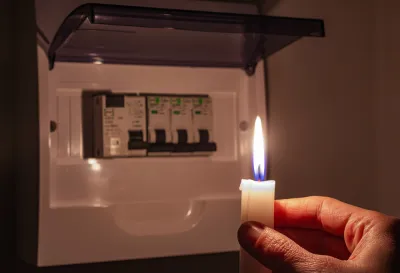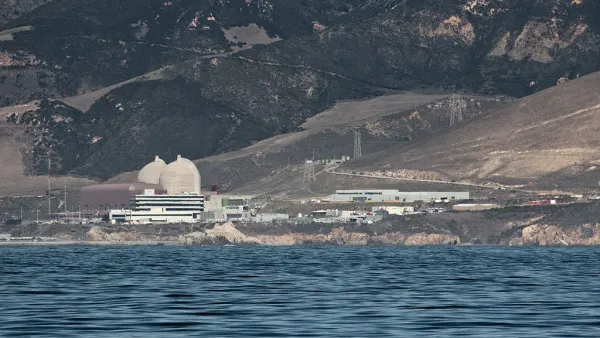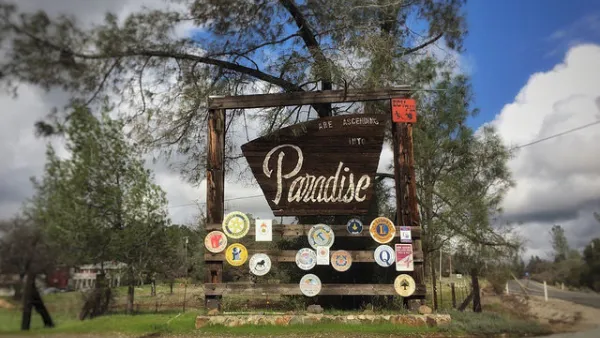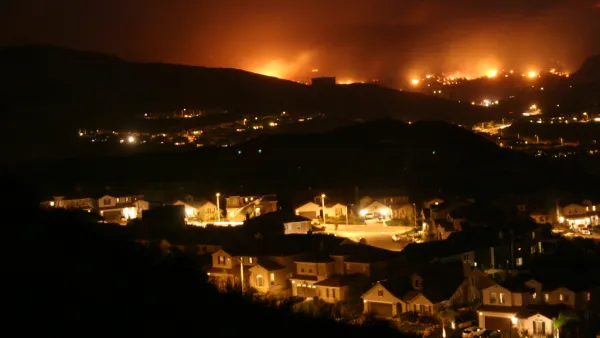In areas served by PG&E, new developments sometimes have to wait months before the utility will turn on the power, creating extra costs for builders and keeping new affordable housing units off the market.

“Hundreds of residential and commercial projects face monthslong waits to get electricity in Northern California at a time when state leaders are touting an unprecedented, climate change-driven overhaul of the way power is produced and used,” reports Wes Venteicher in Politico. Planetizen recently amplified a similar story from the San Francisco Chronicle, which sounded the alarm on the issue.
Causes of the delays include “a troubled utility, a tight labor market and aging infrastructure,” all of which could contribute to a growing crisis. The state’s beleaguered Pacific Gas & Electric (PG&E) utility, which provides service to roughly 16 million people in northern and central California, has been contending with a series of catastrophes and natural disasters. “Across its territory, 319 commercial and multifamily buildings were awaiting electricity connections as of February, according to Public Utilities Commission data provided to state Sen. Scott Wiener (D-San Francisco),” with 95 waiting for over three months.
Notably, these wait times are significantly longer than those for other utilities in the state such as Southern California Edison and San Diego Gas and Electric. “The delays, besides raising concerns about PG&E and the broader transition, drive up construction costs in a state trying to encourage new housing and create jobs that pay enough to afford rent.” The delays have raised the cost of construction by $41 million for at least nine affordable housing developments in San Francisco, said the mayor’s office in a recent memo.
Senator Scott Wiener is proposing legislation to penalize utilities that take longer than eight weeks to provide power, which, if passed, would inject some certainty into a volatile process.
FULL STORY: Need power in California? Get in line.

Analysis: Cybertruck Fatality Rate Far Exceeds That of Ford Pinto
The Tesla Cybertruck was recalled seven times last year.

National Parks Layoffs Will Cause Communities to Lose Billions
Thousands of essential park workers were laid off this week, just before the busy spring break season.

Retro-silient?: America’s First “Eco-burb,” The Woodlands Turns 50
A master-planned community north of Houston offers lessons on green infrastructure and resilient design, but falls short of its founder’s lofty affordability and walkability goals.

Test News Post 1
This is a summary

Analysis: Cybertruck Fatality Rate Far Exceeds That of Ford Pinto
The Tesla Cybertruck was recalled seven times last year.

Test News Headline 46
Test for the image on the front page.
Urban Design for Planners 1: Software Tools
This six-course series explores essential urban design concepts using open source software and equips planners with the tools they need to participate fully in the urban design process.
Planning for Universal Design
Learn the tools for implementing Universal Design in planning regulations.
EMC Planning Group, Inc.
Planetizen
Planetizen
Mpact (formerly Rail~Volution)
Great Falls Development Authority, Inc.
HUDs Office of Policy Development and Research
NYU Wagner Graduate School of Public Service




























